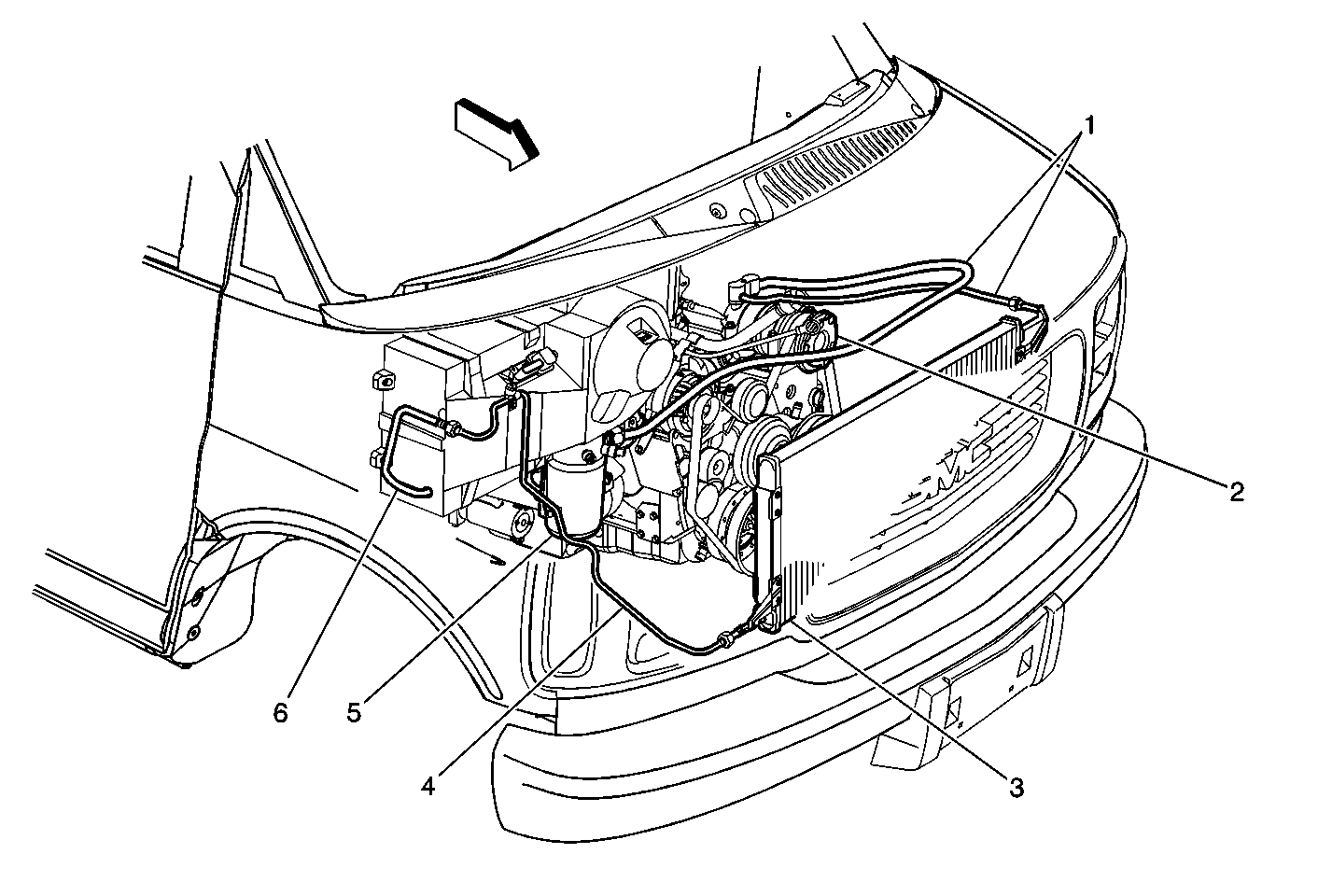The cycling clutch orifice tube (CCOT) refrigerant system cycles a compressor (2)
ON and OFF in order to maintain the desired cooling. This cycling also prevents
evaporator freeze-up. The temperature selector on the control assembly
maintains comfort in the passenger compartment.

